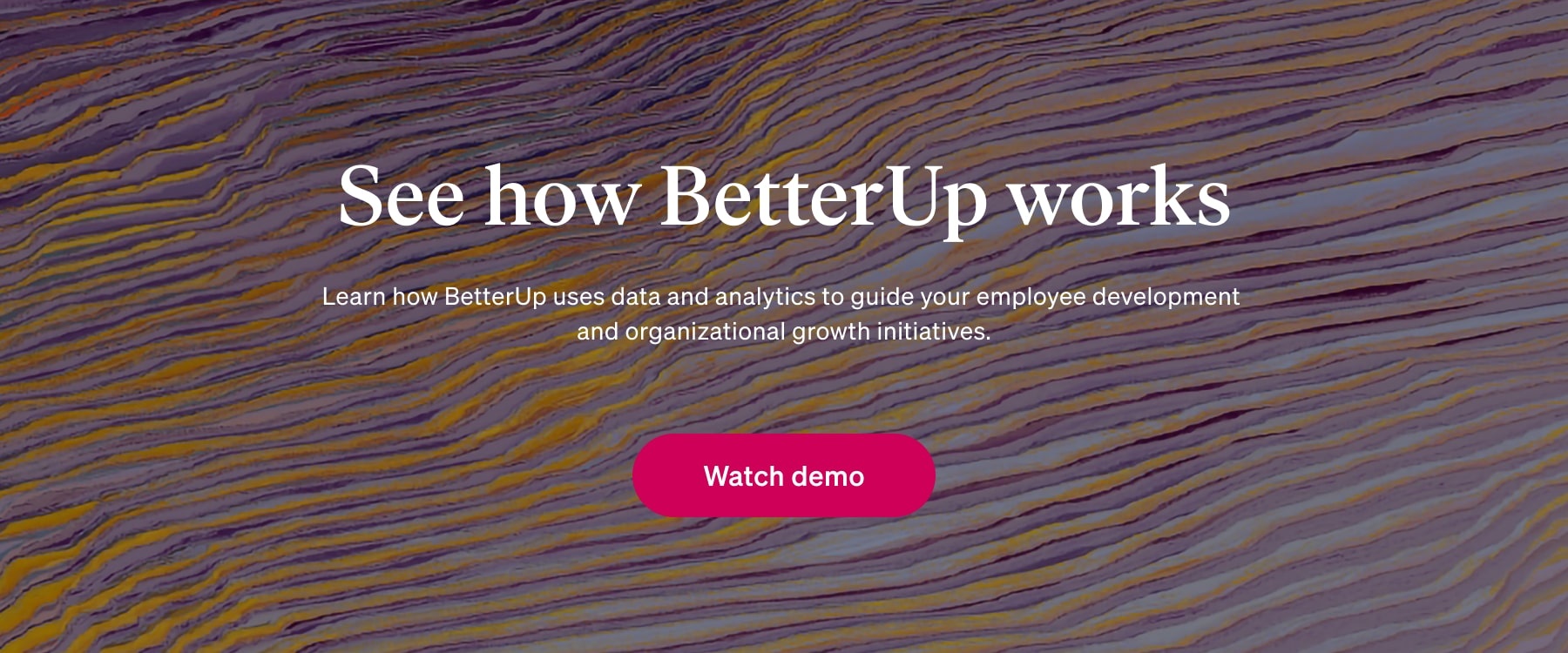-
For Business
For Business
Products
LeadBuild leaders that accelerate team performance and engagement.
Care™Drive productivity through sustained well-being and mental health for all employees with BetterUp Care™.
Solutions
Sales PerformanceTransform your business, starting with your sales leaders.
Diversity & InclusionFoster a culture of inclusion and belonging.
Customers
Case StudiesSee how innovative companies use BetterUp to build a thriving workforce.
- For Individuals
-
Resources
Resources
LibraryBest practices, research, and tools to fuel individual and business growth.
EventsView on-demand BetterUp events and learn about upcoming live discussions.
BlogThe latest insights and ideas for building a high-performing workplace.
ResearchInnovative research featured in peer-reviewed journals, press, and more.
- About
The significant upside of reducing and preventing burnout

Both in and out of the workplace, burnout is reaching epidemic levels.
The vast majority of workers in the US (89%) report experiencing burnout over the past year, and it’s adversely affecting their physical and mental health. Work related stress — even before the pandemic — was responsible for 120,000 deaths and nearly $190 billion in spending each year in the US. And it’s fueling an overall uptick in anxiety, depression, and substance abuse.
While much of the conversation around burnout has centered around how to prevent, manage, or minimize it, there’s been little focus on the positive impact that comes from actually reducing it. We’re only scratching the surface when it comes to understanding how mitigating the effects of burnout affects our overall well-being and shapes our outlook on life.
We were curious if reducing burnout led to any significant improvement in other areas of our mental and emotional health. Analyzing data from nearly 10,000 BetterUp members, we uncovered clear and powerful connections between burnout, hope, and optimism.
What the data say
Controlling for management position (i.e. making sure under represented groups [URGs] and nonURGs were equally represented across management roles) we found:

- Lower burnout is negatively correlated with hope (r=.76), meaning individuals who reported lower levels of burnout also reported feeling more hopeful.
Hope is the belief that your future will be better than today and that you can contribute to that future. Individuals with a high sense of hope are at lower risk of cancer, report less psychological distress, and have an increased level of overall life satisfaction. Hope is a fundamental element of resilience, and helps individuals and teams alike power through conflict and negativity to generate more positive outcomes. - Lower burnout is negatively correlated with optimism (r=.73), meaning individuals who reported lower levels of burnout also reported feeling more optimistic.
Being optimistic does more than just help us see the bright side when things don’t go our way, it can actually improve our physical health and overall wellbeing. People with optimistic outlooks on life have been proven to have a lower risk of cardiovascular disease and other chronic conditions. Optimism is also a key component of future-mindedness, a mindset that helps individuals be more adaptable, agile, and creative so they can better cope with uncertainty.
Why this matters
The workplace is a prime breeding ground for emotional contagion — the spread of attitudes, emotions, and behaviors to others. In other words, we tend to adopt the feelings of the people we are around most.
Unsurprisingly, mitigating burnout leads to lower levels of stress, anxiety, and depression. But more impressively, reducing burnout increases positive feelings like optimism and hope. When teams are made up of individuals with positive mindsets, they are more innovative, more creative, and enjoy increased performance while experiencing less attrition, absenteeism, and conflict.
Taken together with the finding from one survey that 70% of employees would leave their organization for a different employer offering resources to reduce burnout, companies have a lot to gain from taking proactive steps to reduce burnout.
Countering burnout in your organization has real and lasting impact on your employees’ wellbeing and mental outlook which in turn benefits your entire organization. While there are several different resources that can help your workforce deal with burnout, the challenge lies in the fact that everyone experiences stress in their own unique way. The contributing factors to burnout vary as well, including factors related to individual work habits, poor management practices, and culture according to Dr. Jacinta Jiminéz, author of The Burnout Fix. The most flexible solution is personalized coaching.
Professional coaches have been proven to help individuals avoid burnout by helping them regulate their emotions, build resilience, improve communication, and achieve better work life balance. When coaching is individualized and ongoing, employees get the support they need, when they need it, to successfully work through even the most challenging situations. In addition, managers who receive personalized coaching improve their leadership skills and create work environments where their teams feel more recognized, empowered, and valued and experience more inclusion and belonging. On average, BetterUp members have reported a 19% reduction in burnout.
While it’s true that stress and anxiety are unavoidable at times, burnout doesn’t have to be. Recovery is possible, but prevention is preferable. An investment in professional coaching can provide your employees with the support and tools they need to successfully adapt to challenges, create environments where people can perform at their best, counter burnout before it strikes, and minimize its effects when it happens.
Erin Eatough, PhD
Sr. Insights Manager





